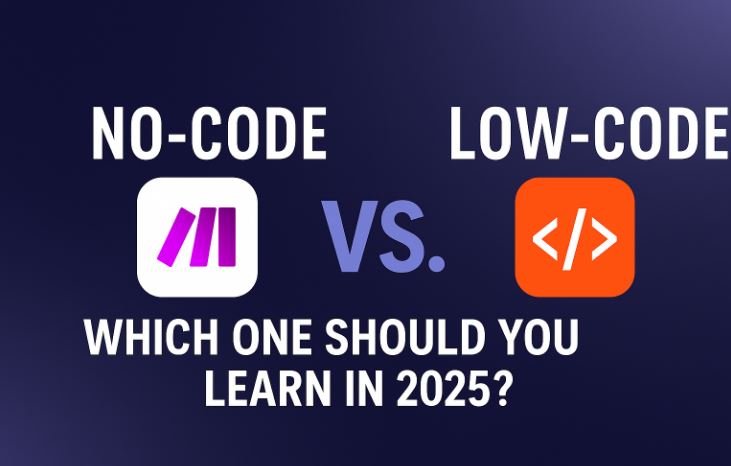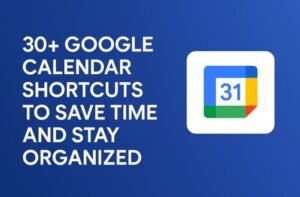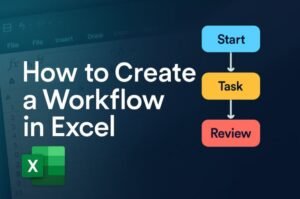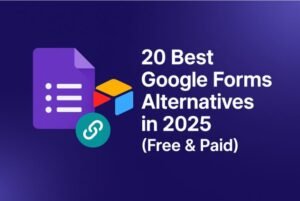The Future of Building Without Code
The digital world is evolving and fast. Today, you don’t need a computer science degree to build a website, app, or automation workflow. Thanks to the rise of no-code and low-code platforms, almost anyone can now create digital products without writing much (or any) code.
Whether you’re an entrepreneur, freelancer, student, or career-switcher, you’ve probably asked:
No-Code vs. Low-Code: Which One Should You Learn in 2025?
This isn’t just a technical decision. It’s a career decision. It’s a future-proofing-your-skillset decision. In this article, we’ll dive deep into both paths—what they are, how they differ, when to use each, and which one will help you thrive in the digital economy of tomorrow.
What Is No-Code?
No-code platforms let you build software, apps, and workflows using visual drag-and-drop interfaces. No need to write a single line of code.
Popular No-Code Platforms:
- Webflow – build websites visually
- Bubble – create complex web apps
- Zapier/Make – automate workflows
- Airtable – database meets spreadsheet
- Thunkable/Adalo – create mobile apps
Who Is It For?
- Non-technical users
- Solopreneurs
- Creatives, marketers, designers
What Is Low-Code?
Low-code platforms allow developers to build applications with minimal hand-coding. While some coding is required, it significantly reduces development time.
Popular Low-Code Platforms:
OutSystems
Mendix
Appian
Microsoft Power Apps
Retool
Who Is It For?
Professional developers
IT teams in enterprises
Technical users building scalable systems
No-Code vs. Low-Code: Quick Comparison Table
| Feature | No-Code | Low-Code |
|---|---|---|
| Coding Required | None | Minimal |
| Ease of Use | Very easy | Moderate |
| Flexibility | Limited for complex apps | High for enterprise-grade solutions |
| Target Users | Non-developers | Developers/IT professionals |
| Speed of Development | Very fast | Fast |
| Custom Logic | Difficult | Easy with code |
| Use Cases | MVPs, websites, automations | Scalable apps, internal tools |
| Learning Curve | Low | Medium |
| Cost | Affordable or free | Often enterprise pricing |
🔍 Which One Should You Learn in 2025?
Learn No-Code if:
You want to quickly launch ideas or MVPs
You’re a solopreneur or creator without a tech team
You need to automate personal or business tasks
You’re switching careers into tech with no prior coding experience
Learn Low-Code if:
You have basic coding knowledge or are open to learning
You’re aiming for a developer or IT-based role
You’re working on complex or scalable apps
You want to work in corporate environments or SaaS
Real-Life Scenarios (Use Cases)
Use Case 1: A Freelance Marketer
No-Code Tools Used: Carrd (landing pages), Mailchimp (email), Zapier (automations)
Goal: Build lead generation funnels without a developer
Result: Launched 5 campaigns in 1 week—all without coding
Use Case 2: An Enterprise Developer
Low-Code Tool Used: Microsoft Power Apps
Goal: Digitize internal HR request system
Result: Built a scalable, secure app with integrations in 4 days using minimal code
Industry Trends in 2025
The global low-code development platform market is projected to reach $65 billion by 2027 (Source: Gartner)
80% of non-IT professionals will build IT products and services by 2026 (Source: Forrester)
Platforms like Webflow and Bubble are introducing AI-driven features, making No-Code even more powerful
Enterprises are shifting to hybrid teams (citizen devs + pro devs), making both No-Code and Low-Code valuable
Career Opportunities & Salaries
| Role | Average Annual Salary (USD) | Skillset Needed |
|---|---|---|
| No-Code Developer | $60,000–$90,000 | Webflow, Bubble, Zapier, Airtable |
| Low-Code Developer | $80,000–$120,000 | PowerApps, Mendix, some JS/SQL |
| No-Code Freelancer | $30–$100/hour | Landing pages, automations, apps |
| Low-Code Consultant | $50–$150/hour | Internal tools, business apps |
🎯 Pro Tip: Freelancers can combine both skill sets for even greater demand!
Learning Paths for Beginners
No-Code Learning Resources:
- Makerpad
- 100DaysOfNoCode
- [YouTube: NoCode.Tech, Doc Williams]
Low-Code Learning Resources:
- Microsoft Learn – Power Platform
- OutSystems Training
- [Udemy Courses for Mendix, Appian]
Can You Combine Both?
Yes! Many professionals use No-Code for front-end or MVPs and Low-Code for backend scalability.
Example:
- Use Bubble to build the front-end of your app
- Use Xano or OutSystems to handle the backend logic
This hybrid approach gives you speed + power.
Security, Scalability, and Limitations
| Factor | No-Code | Low-Code |
|---|---|---|
| Security | Platform-dependent, less control | More control, enterprise-ready |
| Scalability | Good for MVPs, not large apps | Excellent for scaling apps |
| Customization | Limited by platform | Extendable via code & APIs |
| Ownership | You rely on platform | Often more control via integrations |
SEO Tip for No-Code and Low-Code Content Creators
If you run a blog, YouTube, or build for clients:
Use low-competition keywords like “Zapier automation ideas” or “PowerApps for HR”
Publish tutorials that solve real problems
Show behind-the-scenes workflows using Loom or Canva infographics
Suggested Visuals
- Infographic: Side-by-side No-Code vs. Low-Code table
- Flowchart: “Which Path Should You Choose in 2025?” decision tree
- Screenshots: Bubble vs. OutSystems dashboard preview
- Mind Map: Platforms under each category
Would you like me to generate these for you?
Frequently Asked Questions (FAQs)
Q1: Can I get a job with only No-Code skills?
Yes! Startups, agencies, and even mid-size companies hire No-Code specialists for internal tools, landing pages, and automation.
Q2: Is Low-Code worth learning in 2025?
Absolutely. It’s in high demand in the enterprise world. If you’re tech-savvy or already coding, Low-Code opens up better-paying roles.
Q3: Which is better for beginners?
No-Code is easier to start with. You can build something functional in hours. But Low-Code has more long-term scalability.
No-Code vs. Low-Code — Pick What Serves You
The debate isn’t really about which is better.
It’s about which one aligns with your goals, skills, and future vision.
If you want to build fast, test ideas, or start freelancing: No-Code is your friend.
If you want to create enterprise apps, automate workflows, or scale: Low-Code is your power tool.
The smartest move in 2025?
Learn both—even just a little. That hybrid knowledge will make you unstoppable.
What are you planning to build in 2025?
Let us know in the comments!
Want to master both skills? Subscribe to our newsletter for weekly No-Code + Low-Code tutorials.




